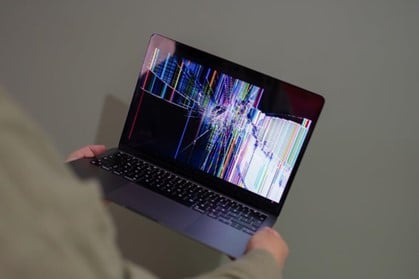You buy a product expecting it to work as promised. Maybe it’s a child’s car seat, a medical device, or a household appliance. You trust that it has passed rigorous testing, been accurately labeled, and is safe for use. But what happens when they shatter that trust? When a product fails you—not just in quality, but in ways that harm you or your loved ones?
It’s a situation no one wants to face, yet countless people do every year. From dangerous pharmaceuticals to malfunctioning vehicles, defective products can have serious consequences. For many, the journey to seeking justice feels overwhelming. The legal jargon, the maze of paperwork, and the intimidation of facing corporations can make you feel small.
That’s where understanding product liability claims comes into play. This guide will equip you with the knowledge to identify whether you have a valid claim and how to pursue compensation if you’ve been harmed. Because when your safety is compromised, your rights matter.
What Are Product Liability Claims? The Foundation of Accountability
At its core, a product liability claim is about accountability. It’s a legal mechanism designed to protect consumers and hold manufacturers, distributors, or retailers responsible for harm caused by their products.
The Legal Framework Behind Product Liability
Unlike other legal cases, product liability doesn’t always require proving negligence. In many jurisdictions, strict liability applies. If a defective product causes harm, the manufacturer can be held liable regardless of intent.
This principle ensures that companies prioritize product safety over cutting corners in production or labeling. It also requires businesses to monitor their supply chains and catch potential defects before products reach consumers.
Why Product Liability Matters for Consumers
Product liability laws exist to protect consumers’ rights, ensuring that harm caused by unsafe products doesn’t go unchecked. Without these laws, dangerous goods could flood the market without repercussions.
For victims, these claims offer a path to compensation for medical bills, lost income, pain, and suffering. They act as a deterrent for society, compelling companies to uphold high safety standards.
Types of Product Liability Claims: Identifying Defects
Not all defective products are the same, and the nature of a product’s defect plays a critical role in determining liability. Broadly, product liability claims fall into three categories.
Manufacturing Defects: When a Product Fails in Production
Manufacturing defects are the easiest to spot because they arise during production. Even if a product’s design and instructions are flawless, errors during assembly or packaging can render it unsafe.
For example, imagine a child’s toy that should have been built with non-toxic paint but ends up coated with harmful chemicals. This is an issue with how it was made.
Design Defects: Flaws in the Blueprint
Design defects are more insidious because they affect every product unit, not just a few. These occur when the product’s design poses a safety risk, even if it’s perfectly manufactured.
Consider a car with a braking system that fails in extreme weather conditions. Even though the car might be assembled exactly as planned, the design flaw makes it inherently dangerous.
Labeling and Warning Issues: When Information Falls Short
Sometimes, the issue isn’t with how they make a product or design it but how it’s presented to consumers. Failing to provide adequate warnings or instructions can result in harm, particularly for complex or potentially hazardous products.
Prescription medications, for example, must clearly state potential side effects and dosage instructions. When these details are missing or unclear, consumers are left vulnerable.
Steps to Filing a Product Liability Claim: Your Roadmap to Justice
Filing a product liability claim can feel daunting, especially against large corporations. However, a clear understanding of the steps involved can make the journey more manageable.
Building a Strong Case: Gathering Evidence
The foundation of any successful claim is solid evidence. This includes the defective product, purchase receipts, and detailed documentation of the harm caused. Photos of injuries or damage, medical records, and witness accounts can strengthen your case.
It’s also crucial to maintain the product in its defective state. Tampering with it or attempting repairs could weaken your claim.
Legal Support: Why an Attorney Matters
While filing a claim independently is possible, having a knowledgeable attorney can make a significant difference. An experienced lawyer can help you navigate the legal system, negotiate with the opposing party, and present a compelling case in court if necessary.
Choosing a lawyer specializing in consumer rights or product liability claims ensures you have the expertise needed to succeed.
Overcoming Challenges in Product Liability Claims
Filing a claim is rarely straightforward. You’ll likely face challenges from proving the defect to countering aggressive corporate defenses.
Proving the Connection Between Defects and Harm
One of the trickiest aspects of a product liability case is establishing causation—proving that the defect directly caused your injury. This often requires expert testimony from engineers, medical professionals, or industry specialists.
The Manufacturer’s Defense: What You Might Encounter
Corporations often employ tactics to shift blame onto the consumer. Common defenses include claims of product misuse or arguing that the defect didn’t cause harm. Being prepared for these strategies and countering them effectively is vital to success.
The Role of Consumer Protection Laws
Consumer protection laws play a vital role in product liability cases, ensuring individuals have the tools to hold companies accountable.
Legislation That Protects You
Laws like the Consumer Product Safety Act and the Magnuson-Moss Warranty Act provide a framework for addressing defective products. These laws require companies to meet specific safety standards and provide transparent information about their goods.
How Consumer Advocacy Drives Change
Beyond individual claims, consumer protection efforts push for broader industry changes. Successful lawsuits often lead to product recalls, improved safety protocols, and more stringent regulations, benefiting everyone.
Product Liability Claims – Know Your Rights
Product liability claims are more than a fight for compensation—they’re about ensuring justice, promoting accountability, and protecting others from harm. As a consumer, you can demand safety and transparency from your products.
At Spirit One, we understand how intimidating taking on corporations or navigating complex legal systems can be. That’s why we’re here to empower you with knowledge and guide you every step of the way.
Whether you’re facing a defective product issue or seeking to learn more about your rights, Spirit One provides clear, accessible legal information to help you make informed decisions. Stay informed, stay empowered, and remember: your safety matters, and so do your rights.


